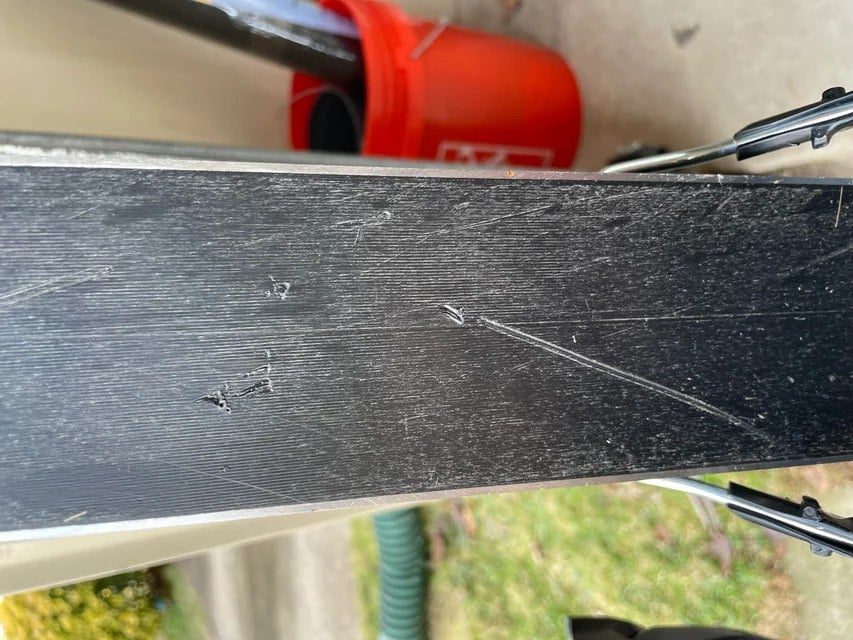Back when I worked in a ski shop, most people didn’t come in asking for a wax. They came in saying “my skis feel slow” or “they just don’t glide anymore.” Nine times out of ten the bases were bone dry. The truth is, you don’t need to be a shop tech to spot the signs. Once you know what to look for, it’s obvious.
1. White or Gray Streaks on the Base
Flip your skis over. If you see chalky white or gray patches instead of a smooth black base, that’s the ski screaming for wax. It’s the polyethylene drying out and looking “ashy.” Usually it shows up underfoot first, since that’s where the pressure and friction are.

2. Slow Glide on Flats
This is the one everyone notices. If you feel like you’re skating or pushing just to keep up on cat tracks while your friends cruise, your bases are dry. Freshly waxed skis feel slippery on even the gentlest slope. Dry skis feel like sandpaper.
3. Edges Catching or Feeling Grabby
Wax isn’t just about glide, it also helps your skis release smoothly from turn to turn. When the base is dry, edges can feel “sticky,” especially on flatter terrain. A good wax job smooths that out.
4. Bases Look Dull Instead of Glossy
A healthy ski base has a slight sheen to it, even when it’s not freshly waxed. When it’s dull, rough, and looks tired, it’s past due.
5. It’s Been a While
Even if you don’t notice the signs, if you’ve been skiing several days in a row without wax, it’s time. Snow is abrasive, and it pulls wax out faster than most people realize.

How Often Should You Wax?
The old shop line was: every 3–5 days on snow if you want to keep bases fast and healthy. Racers wax every run, but for most skiers that’s overkill. If you’re skiing hard all season, plan on at least a few hot waxes to keep the bases from drying out completely.
Can You Wax at Home?
Absolutely. Hot waxing isn’t rocket science. With a decent ski wax kit and some practice, you’ll save a ton of money over shop tunes and keep your skis faster all season. The trick is using the right wax for the temps you’re skiing. If you’re not sure where to start, check out our breakdown of the best ski waxes for every condition.
Final Thoughts
Waxing isn’t just about speed. It protects your bases, makes skiing easier and keeps your gear lasting longer. Once you start spotting the signs – white streaks, sluggish glide, dull bases – you’ll never unknow them. Treat waxing like part of the sport, not just a chore and your skis will thank you for it.
